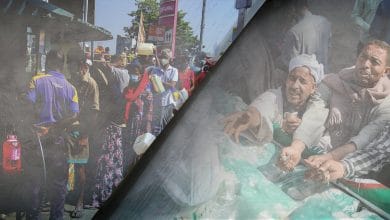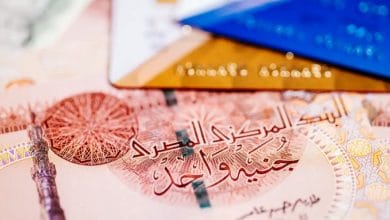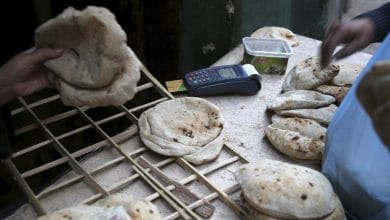
Lifting Subsidy & the Question of Social Justice in Egypt
In 2014, Egypt started execution of a plan to remove subsidies on energy sources, targeting achievement of savings that assumingly would be directed to supporting the poor and marginalized classes, as a substitute of commodity subsidies, which many studies indicated that they used to go to undeserving persons.
This paper attempts to review these savings since the government announced its plan to lift subsidies, according to the general budget data, in order to find out how these savings were spent. In this context, the study covers the years 2014-2019. The paper attempts to answer these questions through the following points:
Subsidy Cuts and Government Justifications
The allocations for subsidies have witnessed a lot of changes during the period considered in this study.
Table (1): The evolution of the allocations of total subsidies, grants and social benefits in the state budget during the period 2014-2015 – 2019/2020.
| Fiscal year | Total subsidies, grants and social benefits | % of GDP |
| 2014/2015 (Actual) | 198,570 | 8.2% |
| 2015/2016 (Actual) | 201,024 | 7.4% |
| 2016/2017 (Actual) | 276,719 | 8% |
| 2017/2018 (Actual) | 329,379 | 7.4% |
| 2018/2019 (Expected) | 328,291 | 6% |
| 2019/2020 (Expected) | 327,699 | 5.9% |
(Source: The researcher, based on the figures in the financial statement for
the draft state budget for the fiscal year 2018/2019, p: 78, as well as the
figures in the financial statement for the draft state budget for the fiscal
year 2019/2020, p: 82, in addition to Follow-up financial performance report
for the period July-March 2018/2019 in order to know the GDP for the years
2017/2018 and 2018/2019.)
Data from the above table show the successive cuts in allocations for subsidies, grants and social benefits as a percentage of GDP, where it recorded 8.2% in FY 2014/2015 and decreased thereafter in FY 2017/18 to 7.4%. In the current fiscal year 2019/2020, it is possible to say that despite the increase in government allocations for subsidies, grants and social benefits as a number, its percentage of GDP has declined significantly.
It should be noted that the period during which the government began to lift energy subsidies, in coincidence with the devaluation of the Egyptian pound, was a difficult period for the poor, where inflation rates exceeded 30% in mid-2017; which means hiking prices and increased pressure on all society segments, particularly the poor and marginalized. Therefore, the government was supposed to increase subsidies in real terms, i.e. as a percentage of GDP, to support the society’s lower income classes; but this has not happened.
Subsidy savings, and how they were spent
The following table details the allocations for the ‘subsidies, grants and benefits’ item, and shows its ups and downs over the last three years.
Table (2) allocations for subsidies, grants and social benefits in the state budget during the period 2017/2018 – 2019/2020, and total savings in allocations for various items. (In LE million)
| Statement | 2017/2018 (Actual) | 2018/2019 (Expected) | 1st Year Savings | 2019/2020 (Expected) | 2nd Year Savings | Total Savings |
| Electricity & Petroleum Products | 149,388 | 105,075 | 44,313 | 56,963 | 48,112 | 92,425 |
| Basic Food Commodities | 80,500 | 86,175 | 5,675 | 89,000 | 2,825 | 8,500 |
| Farmers’ Subsidy | 733 | 1,065 | 332 | 565 | 500 | 168 |
| Water, Medicine & Infant Milk | 1,700 | 2,500 | 800 | 2,500 | – | 800 |
| Subsidy & Grants for Social Services | 88,336 | 107,427 | 19,091 | 128,947 | 21,520 | 40,611 |
| Additional Requirements and Reserves | 0 | 11,800 | 11,800 | 32,200 | 32,200 | 32,200 |
| Total Subsidies, Grants and Social Benefits | 329,379 | 328,291 | 1,088 | 327,699 | 592 | 1,680 |
Notes:
1- Figures in green refer to savings, and figures in yellow refer to deficits.
2- The table did not list all the allocations under the item (total subsidies, grants and social benefits) in the budget, but the excluded allocations represent only a small percentage, not exceeding 6% in any year.
(Source: The researcher’s work, based on the figures in the financial statement on the draft state budget for the fiscal year 2019/2020, p: 82.)
Listing the allocations for subsidies, grants and social benefits in the state budget during the period 2017/2018 – 2019/2020, the above table shows that these allocations decreased from LE 329,379 million in 2018/2019 to LE 327,699 in 2019/2020, i.e. about LE 1,680 million.
There have been significant changes in the provisions of the table items; for example, there have been savings in the item of ‘electricity and petroleum products’, estimated at LE 92.4 billion while allocations for subsidizing the ‘Basic Food Commodities’ increased by LE 8.5 billion. For a more in-depth analysis of the policies adopted by the government on subsidies, the following observations monitor some details about each individual item:
1- The subsidies for electricity and petroleum decreased by about LE 44.3 billion in the first year, then in the second year by LE 48.1 billion, which means that the total decline was LE 92.4 billion. Accordingly, the Egyptians have endured successive increases in the prices of electricity and petroleum products, which reflected in high inflation rates, especially in 2017.
2- Subsidy for the basic food commodities increased by LE 5.7 billion in the first year, and LE 2.8 billion in the second year, while subsidies of electricity and petroleum products decreased by LE 92.4 billion during the same period. Also, the inflation rate in 2018 was 21%, while it is expected to reach 13% in 2019. Therefore, the increase in allocations of basic food goods was supposed to be in line with the inflation rate, but this did not happen; and instead, the government reduced the number of beneficiaries of subsidized bread.
The following table shows the beneficiaries of subsidized bread and flour according to the figures of the financial statements for the budgets of 2017/18, 2018/19 and 2019/2020.
Table (3): Total allocations of the item of basic food commodities, number of beneficiaries of bread and flour subsidies, and number of bread loaves for each citizen during the period 2017/2018 – 2019/2020.
| Statement | 2017/2018 | 2018/2019 | 2019/2020 |
| Allocations for Basic Food Goods | 80,500 million | 86,175 million | 89,000 million |
| Beneficiaries of Subsidized Bread and Flour | 76.8 million | 78.6 million | 70.6 million |
| Number of Bread Loaves Per Citizen | 140.1 billion | 134.4 billion | 120.3 billion |
(Source: The researcher’s work, based on the financial statement on the draft state budget for the fiscal years 2017/2018, 2018/2019, 2019/2020, pp: 77, 79, 83.)
It is clear from the above table that despite the increase in the allocations for the item of ‘basic food goods’, the number of beneficiaries of subsidized bread and flour and the number of bread loaves per citizen have decreased; this is because the increase in the increase did not cover the value of inflation rate. The increase in allocations of basic food goods was supposed to be in line with the inflation rate, but this did not happen; and instead, the government reduced the number of beneficiaries of subsidized bread.
3- The allocations for the water, medicines and infant formula subsidies increased, due to the fact that it was a precondition for Egypt’s agreement with the IMF to obtain the $12b loan.
4- The ‘additional requirements and reserves’ appeared for the first time in the FY2018/2019 budget by LE 11.8 billion, and LE 32.2 billion in FY 2019/2020 budget. However, it is not known how these allocations will be spent, which opens doors for corruption.
5- The item of ‘subsidies, grants and social benefits’ during the last two years witnessed an increase of LE 1.68 billion, as shown in the following table:
Table (4): The evolution of allocations for subsidies, grants and social benefits during the period 2017-2018 – 2019/2020.
| Statement | 2017/2018 (Actual) | 2018/2019 (Expected) | 2019/2020 (Expected) |
| Support for Passenger Transport | 1,804 | 1,850 | 1,850 |
| Support for Students’ Railways Subscriptions | 110 | 120 | 200 |
| Support for Students’ Subway Subscriptions | 98 | 250 | 400 |
| Support for Students’ Railways Subscription (non- economic lines) | 794 | 800 | 1000 |
| Support for Students’ Health Insurance | 811 | 344 | 351 |
| Support for Women Breadwinners’ Health Insurance | – | 165 | 166 |
| Support for Health Insurance for Children under School Age | – | 232 | 227 |
| Support for Health Insurance for Low-Income People (Universal Health Insurance) | – | – | 252 |
| Support for Health Insurance for Low-Income People (Social Security Pensioners) | – | 1500 | 1000 |
| Support to Farmers’ Health Insurance | – | 1110 | 100 |
| Social Security Pension | 17,535 | 17,500 | 18,500 |
| Child Pension | 8 | 70 | 70 |
| Social Affairs Benefits | 75 | 175 | 178 |
| Contributions to Pension Funds | 52,500 | 62,043 | 82,200 |
| Medical Treatment of Citizens at the Government’s Expense | 5,750 | 7,434 | 6,622 |
| Other Social Benefits | 2,129 | 2,895 | 2,037 |
| Grants and Aids | 6,723 | 10,747 | 13,793 |
| Total | 88,336 | 106,224 | 128,947 |
(Source: The researcher’s work, based on the figures in the financial statement of the draft budget of the FY2018/2019, p: 78, as well as the draft budget of the FY2019/2020, p: 82.)
It is clear from the above table that there are increases in the first four items. However, the paper argues that all of these increases are unjustified and indicate suspected corruption.
With regard to the Medical Treatment of Citizens at the Government’s Expense, allocations for this item amounted to LE 5,750 million in the budget of the FY2017/2018.These allocations increased in the FY2018/2019 to reach LE 7,434 million. The budget for the current FY2019/2020 was reduced to LE 6,622 million, which raises many questions.
It is undeniable that during that period, poverty rates increased in Egypt, and the expenditure of the poorest households on food consumed 48% of the total household income.
Also, the population increase in Egypt makes it very important to increase the allocations for the treatment of citizens at the government’s expense, where population estimates indicate that the number of citizens at the beginning of 2016 was 90.1 million; and according to the annual bulletin of the Health Services Statistics 2016, the number of citizens who were treated at the government’s expense, both inside and outside Egypt, was 2,264,062 citizens. The Central Agency for Public Mobilization and Statistics (CAPMAS) estimated Egypt’s population at the beginning of 2019 to 98.1 million, an increase of 8.9% compared to 2016, which necessitates increasing the number of citizens that are likely to receive medical treatment at the government expense, at least by the same rate.
The allocations for the items of ‘other social benefits’ and ‘grants and assistance’ increased in the FY2017/2018 to LE 8.8 billion and reached LE 15.7 billion in the current fiscal year. However, it is not exactly known how these funds were spent.
Conclusion
The cuts on subsidies during the last three years coincided with high inflation rates, which has resulted in a significant decline in subsidy allocations as a percentage of GDP.
An analysis of the figures in the financial statements issued by the Ministry of Finance shows that the question of transparency still poses itself strongly, and that many of the increases are not justified and did not reflect any positive impact on citizens, while the savings that the government succeeded in achieving had a significant negative impact on the lives of Egyptians, such as the hiking prices of fuel and electricity which resulted in increasing the transport fees and commodity prices, as well as the high inflation rates.
To Read Text in PDF Format Click here.



